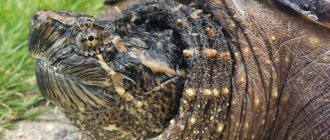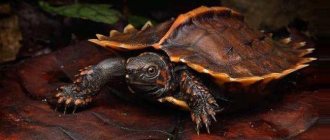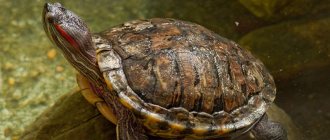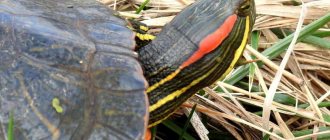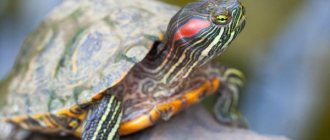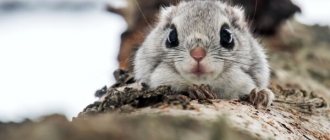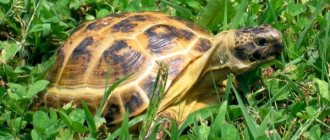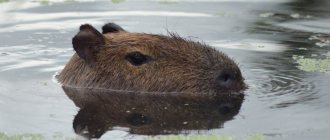A pet can become a true friend and a source of positive emotions for a person. It is important to know in advance all the intricacies of the care and maintenance of the animal that you plan to have in the family. What does a Mediterranean tortoise look like? A description for children and adults, photographs, as well as interesting facts about the animal are given in the article below. What to feed and how to properly water a reptile? What conditions will be required to maintain such an exotic friend as the Mediterranean land tortoise?
What do we know about Mediterranean turtles: habitat
Like any pet, the Mediterranean tortoise will require conditions close to the natural environment to be kept in a human home. The heat-loving and sun-loving reptile lives, depending on the variety, in the countries of the southern European region, in semi-desert or steppe areas, in the region of the Caucasus Mountains and Transcaucasia.
Two of more than twenty species of this land turtle can be found in our country. These are the Nikolsky tortoise, the Mediterranean tortoise, listed in the Red Book, which lives exclusively in the Russian subtropics of the Krasnodar Territory, and the Pallas tortoise in certain areas of the Dagestan Republic. However, selling these rare animals in pet stores and keeping these rare animals at home is prohibited.
Subspecies
Dividing this species of turtle into subspecies is difficult. Due to their large range spanning three continents, as well as their location on different landscapes and in different climatic conditions, biotopes have produced a huge number of variants. At least twenty subspecies have now been discovered.
Armenian turtle
The most famous of them are:
- Armenian turtle
- Libyan Greek tortoise
- Mediterranean Iberian
- Moroccan tortoise
- Nikolsky's turtle
- Iranian tortoise, Zarudny's tortoise
- Testudo graeca graeca
- Testudo graeca pallasi
- Testudo graeca terrestris
Appearance (description)
What does a Greek (or Mediterranean) tortoise look like? A description of this reptile can be found in any reference book. An adult is a medium-sized turtle, only 15-30 cm, with a powerful and fairly strong shell. The weight of the animal is rarely more than three kilograms. The most obvious difference from the equally popular Central Asian turtle is the number of toes on the reptile’s paws: this species has as many as five, while the Central Asian “relatives” have only four toes on each paw. The color of the shell is brown, with a pronounced spotted pattern; the color of the young reptile is somewhat brighter.
The age of a turtle can be determined by studying the ring-shaped pattern on the shell: the more rings on the surface, the older the animal.
Reproduction
The breeding season for Mediterranean turtles begins in early spring and continues until early summer, depending on the subspecies. When kept in captivity, males become sexually active until August, but females do not lay eggs after such late mating. In nature, turtle marriage ceremonies take place in clearings, forest edges and other open areas. You can often hear muffled clicking sounds there. This male declares his sympathy for the female by hiding his head deep into the shell and hitting her shell several times.
Starting from the end of June, females begin to lay eggs: they dig a shallow hole in soft soil and place 3 to 10 round white eggs weighing up to 25 grams in it. During one mating season, a female can lay eggs three times, i.e. over the summer about 15 eggs. Having made a clutch, the female buries it and crawls along the surface several times. This concludes her maternal responsibilities.
Turtles begin to hatch from eggs from July to mid-September. Most Mediterranean tortoise hatchlings appear in mid-August. The turtle in the egg is fully formed in 2.5 - 3 months. The necessary conditions are moist soil and warm sunlight.
The upper jaw of turtles ends with a sharp spike - the so-called egg tooth, with which they pierce the egg shell, and then, turning in a circle, open it like a tin can. Next, they widen the resulting gap with their paws and leave the shell. Most of the hatched turtles do not crawl to the surface, but bury themselves in the ground and spend the winter next to the nesting chamber. Grown-up young turtles emerge in the spring.
Overwintered baby turtles are small in size: the unstrengthened shell reaches a length of 3-4 cm, and their weight is approximately 15 grams. After six months they grow up to 7 cm and reach a weight of 80 grams.
Most zoos, as well as some experienced hobbyists, have successfully bred Mediterranean tortoises in captivity.
What's so special about homemade tortilla?
For those who are just planning to purchase a turtle as a pet, it immediately makes sense to know that such a pet needs to be provided with an ideal combination of external conditions, nutrition and hygiene - only in this case can the Mediterranean turtle live a long life, at least 25-30 years .
And of course, at the initial stage all this will require certain financial costs. Is a pet Mediterranean turtle worth the effort? Will such a pet be able to interest children and become a good alternative to a warm-blooded animal?
Of course, curiosity, the ability to observe the habits and lifestyle of a pet, a caring and responsible attitude towards a living creature - all this can be taught to a child by a Mediterranean tortoise. Interesting facts about this reptile, discovered by scientists, allow us to conclude that the turtle will not become a “living toy”, but a real friend. Here are just a few interesting details:
- The Mediterranean tortoise completely refutes the assertion that all tortoises are clumsy and slow creatures. Young healthy reptiles move around the house with pleasure: the higher the temperature, the faster the speed of the “turtle run”. In addition, this species is capable of climbing to a significant height for a turtle, clinging to protrusions and irregularities with its claws. For example, they may well climb onto a chair or bed.
- Land species of turtles have excellent hearing and vision, and are able to distinguish odors. Added to this is the ability to remember objects and human faces, and respond to voice intonation.
- To one degree or another, turtle shell contains phosphorus. Because of this, an amazing feature has been noticed of accumulating sunlight (if the reptile has spent the entire day exposed to sunlight) and emitting a slight glow at night.
- Turtles are hardy and can go without food for very long periods of time, slowing down and hibernating.
Also, each reptile may have its own character traits and habits, which will certainly make it an interesting object to observe and can interest both adult family members and children.
Additional Information
Observations show that during the first period of life - 1-2 years - new rings are formed every 1-2 months, and in subsequent years of life, a new ring sometimes does not appear for a whole year, although the turtle continues to grow and its size and weight increase . How this happens and why is not clear. Turtles are active only during the day. But during the hottest daytime hours in the summer, they not only hide in the shade, but also burrow into the forest floor, and in the steppe under the turf or into the ground. In spring and late autumn, especially in the morning, turtles, on the contrary, crawl out into open places to bask in the sun.
Turtles spend the winter hibernating, climbing into holes, crevices between stones, roots, depressions in the ground, or burrowing into the ground to a shallow depth. Hibernation usually begins in early or mid-October, and they only wake up in March. Turtles can tolerate cooling down to 5.5 C.
Turtles are silent, but if something threatens them, they hiss loudly. When irritated or frightened, turtles quickly retract their head and forelimbs into their shell, making a “cough” sound. Some individuals, especially males, are prone to aggression and can bite humans.
The main reasons for the decline in numbers, reduction and fragmentation of the Mediterranean tortoise's habitat are anthropogenic transformation and destruction of its habitats and illegal catching of turtles for the purpose of sale for keeping at home. According to leading experts, the Mediterranean tortoise is one of the most endangered reptile species in the Russian Federation and there is a real threat of its extinction. The degree of knowledge of the current state of the species is insufficient to organize effective measures for its protection.
- Terrarium
- Feeding
- Health
- Selection and purchase
- Care and hygiene
Video:
| Kingdom: | Animals |
| Type: | Chordata |
| Class: | Reptiles |
| Squad: | Turtles |
| Family: | Land turtles |
| Genus: | Mediterranean turtles |
| View: | Mediterranean turtle |
Mediterranean turtles (Testudo graeca), or Greek turtle
, or
Caucasian tortoise,
has been considered the most popular pet tortoise in Europe for many years. They were so popular that they even received the name “common turtle.” In fact, very little is known about this animal, and especially little is known about their natural lifestyle.
House for a reptile: where to place your pet?
Even before you bring your pet home, you should take care of a terrarium - a “turtle manor”, where a Mediterranean tortoise will feel as comfortable at home as in its natural environment.
This requires a tank, preferably made of thick transparent glass, at least 50x40x30 cm in size. At the bottom of the future terrarium, soil is created: a layer of disinfected soil and on top of it a layer of clean sand or hay, at least 5 cm high. The further design of the terrarium depends on the imagination of the owner: the relief can be decorated with small clean stones or wooden elements, artificial plants. It is not advisable to install living green plants, if only for fear that the turtle will eat them. Of the required elements in the terrarium you will need to install:
- Equipment for lighting and heating.
- Shelter.
- Feeder and drinker.
If the size of the terrarium allows, you can dig a container under the pond for swimming. The advantage of such a device will be the additional physical activity of the reptile. But this will also add more worries: you will need to regularly change the water and control its temperature.
The place to install the terrarium should be well lit, but away from drafts and direct rays of the sun. For the winter, your pet can be provided with conditions for hibernation. To do this, the tank with the terrarium is moved to a cool, dark place. Before switching to “winter” mode, the reptile must be bathed and not fed for one or two weeks. The signal for the start of wintering is changes in the pet’s behavior: the turtle noticeably slows down and tries to burrow into the ground.
Video review
Mediterranean turtle
The Mediterranean turtle is a small animal, the size of which in adulthood does not exceed 25–28 cm. Under natural conditions, this animal is found in the Mediterranean countries, where its name comes from, as well as in Iran, Iraq, Georgia, Azerbaijan, Armenia and on the Black Sea coast Caucasus.
The shell of this species of animal is strong, well-developed, convex, and covers the entire body. The scutes of the shell form a complex pattern in the form of irregular rings, dark along the outer edge. The older the turtle, the more rings there are on its shell, although their number does not correspond to the exact number of years of the animal.
The turtle lives in areas with different climates. In the Caucasus and Transcaucasia, it lives in steppes and semi-deserts, as well as on bush-covered mountain slopes, and on the Black Sea coast of the Caucasus - in forests. Sometimes turtles live in fields and vineyards.
Mediterranean turtles are most active during the day, but in summer, in hot weather, in the middle of the day they burrow in the forest under fallen leaves and branches, and in the steppe - underground. In cool weather in spring or autumn, turtles crawl out into open areas to bask in the sun.
These animals are quite slow, but in the spring, during the breeding season, they often have to cover considerable distances. Turtles do not notice small obstacles in their path, such as bushes or pebbles, as they walk straight ahead.
The Mediterranean tortoise feeds mainly on plant foods, although it does not disdain worms, snails, and insects. During the winter, representatives of this species hibernate, for which they take refuge in crevices, small depressions between the roots of trees, or bury themselves in the ground. Turtles emerge from hibernation in March. After awakening, they begin mating games, which take place mainly in open places. During these games, the male comes close to the female, hides his head and taps the edge of his shell against the female’s shell.
In everyday life, these turtles do not make sounds, but when they notice a danger threatening them, they begin to hiss loudly.
In June-July, female turtles begin to lay eggs in specially dug holes. During the summer, these animals lay eggs an average of three times. Each clutch contains 3–8 white eggs. After the eggs are laid, the turtle covers them with soil and compacts its surface by walking over it several times. After this, she no longer returns to the place of laying.
After 70–80 days, the cubs are born. The main feature of small Mediterranean turtles is the egg tooth located at the end of the upper jaw. With this tooth, small turtles pierce the egg when it is time for them to get out. Turning inside the egg, the turtle cuts the shell with its tooth.
Since young turtles are born in late summer or autumn, most of them do not come to the surface, but burrow even deeper into the ground to overwinter. In spring, turtles crawl to the surface. Their weight at this age is about 15 g, and the length of the shell is 3 cm.
Despite the presence of a shell, turtles have many enemies.
Small turtles especially suffer from attacks by predatory animals and birds, since their shell is still soft. Many predators enjoy feasting on turtle eggs.
In many ways, people contribute to the decline in the number of Mediterranean turtles by catching these animals in huge quantities and destroying their natural habitat. You should not take home very small turtles, which practically do not survive at home; it is better to give preference to adult and sufficiently developed animals.
Lighting
To create the necessary lighting in the terrarium, a powerful lamp equipped with a reflector is suitable. A 60-90 kW lamp will serve not only as a light source, but also as a heating source. This “artificial sun” is placed in the corner of the terrarium in such a way that the reptile has the opportunity to choose the temperature mode that is needed at the moment. To control, the air temperature is measured using a home thermometer: in a “sunny” corner this indicator should be at least 30-35˚, while in the opposite “cool” corner it should be about 24-26˚. For comfortable conditions, it is not necessary to turn on the lamp for the whole day. At night, you can also make it “night” in the terrarium by turning off the light source.
Additionally, it is worth installing an ultraviolet lamp in the terrarium. The optimal mounting height for it is from 20 to 40 cm from the height of the pet. Just an hour of operation of such a device will be enough for the turtle to receive its daily requirement of “sunlight substitute.”
Shelter
A small shelter in which the turtle can rest - a “house” in a terrarium with opaque walls. It is best to buy a ready-made one at a pet store, but if you cannot purchase a ready-made turtle house, it can be replaced with a rodent house, a fixed half of a ceramic flower pot, or a homemade box house made of wood or safe plastic.
How to feed a turtle: suitable foods
When choosing food products, you should be guided by the following principle: land turtles are natural vegetarians, so the best food for them will be fruits, berries, herbs and grass shoots. Figuratively, all products traditionally considered “turtle food” can be divided into three categories:
- Prohibited (inappropriate): this includes animal food - fish, eggs, meat, cottage cheese and cheese and other lactic acid and dairy products. In addition, grain products (porridge, cereals, bakery products), nuts, potatoes, corn, dates are strictly not recommended.
- Food that can be given for variety, but very rarely and in small quantities. This category includes exotic fruits (bananas, pineapples, citrus fruits), cucumbers, cherries, asparagus, radishes and radishes, green onions, legumes, spinach and sorrel leaves, beets, seeds, garlic, tomatoes, cabbage.
- Products that are good for your daily diet. These are berries, apples, young shoots of dandelion, nettles, clover, plums and nectarines, persimmons, parsley and dill, pumpkin, lettuce, sweet peppers, peaches and apricots, carrots, melon and watermelon (without seeds and peel), kiwi, grapes, zucchini and eggplant.
Food should be given thoroughly chopped, preferably in the form of a mixture of several products, in a ratio of 70-75% vegetable food to 25-30% chopped fruit.
The choice of dry food should be treated with extreme care and caution. Many veterinarians do not recommend including this food in the diet at all, but if necessary, you can feed the turtle with special food marked “for land animals.”
Nutrition
These turtles are herbivores. In the wild, they feed on vegetation, both dry and succulent, the foliage of various trees and shrubs. Sometimes they eat fruits and berries - plums and apricots, apples, grapes. Do not refuse insects, snails and slugs.
Vitamins and supplements
If a Mediterranean tortoise lives in the house, caring for the reptile is impossible without properly selected mineral and vitamin supplements to the food. One of the necessary supplements for turtles is calcium. The lack of this element leads to curvature and improper growth of the shell and bone fractures. Calcium supplements are given every one to two weeks, as a spray or loose powder. An alternative to powdered calcium is crushed eggshells.
Additionally, you can feed the reptile with a special vitamin complex, but also no more than once a week. For example, once every 10-12 days you can add a couple of drops of Trivita or fish oil to your pet’s food.
Keeping with other animals
An important question is how much a Mediterranean tortoise can coexist on the territory of a house with other animals of its own or other species. Owners of this species of turtle claim that due to the low aggressiveness of these reptiles, several Mediterranean turtles get along well in the same territory. However, the size of the terrarium must correspond to the content of such a number of animals. In addition, experts recommend placing turtles during the mating season or if individuals clearly demonstrate aggressive behavior to each other.
As for other types of domestic animals, it is better to protect the turtle from contact with them. Overly active behavior of a dog or cat can cause stress and, as a result, illness in the animal.
Subspecies
The division of Mediterranean tortoises into subspecies is difficult and confusing. Given the enormous range over three continents, different landscapes, climates and biotopes have produced a huge number of variants, with new subspecies constantly being discovered. Currently at least 20 subvarieties are published:
- T. g.
graeca (North Africa and Southern Spain) - T. g.
soussensis (Southern Morocco) - T. g.
marokkensis (Northern Morocco) - T.g.
nabeulensis - Tunisian Mediterranean tortoise (Tunisia) - T.g.
Cyrenaica (Libya) - T.g.
ibera (Turkey) - T.g.
armeniaca - Armenian tortoise (Armenia) - T.g.
buxtoni (Caspian Sea) - T.g.
terrestris (Israel/Lebanon) - T.g.
zarudnyi (Iran/Azerbaijan) - T. white g.
(Algeria)
This partial listing shows problems in the subspecies division. The differences in shape are primarily in size and weight, as well as coloration, which ranges from dark brown to bright yellow, and types of spots, ranging from pure colors to many spots. In addition, the bending of the edges of the shield ranges from minimal to obvious. To avoid becoming lost among the subspecies, recently several turtles previously classified as Testudo graeca
have been assigned to different varieties or even different genera.
Genetic richness of Testudo graeca
also shown in their crossing. Turtles of groups of different shapes often mate, producing offspring with greatly different shapes and colors. Perhaps the best means of identification for the future is simply place of origin.
The smallest, and perhaps cutest, subspecies is the Tunisian Mediterranean tortoise. It has particularly bright and striking coloring. However, these are also the most sensitive turtle species, so they cannot be kept outdoors in temperate climates, as cold and rainy summers quickly cause the animals to get sick. They are also incapable of long periods of inactivity.
At the other extreme, animals from northeastern Turkey are very robust, such as Hermann's tortoise. The largest specimens come from Bulgaria. Instances have been reported. In comparison, the Tunisian tortoise has a maximum weight of 0.7 kg (1.5 lb). Testudo graeca
also closely related to the marginated turtle
(Testudo marginata)
. The two varieties can interbreed, producing offspring capable of reproducing.


